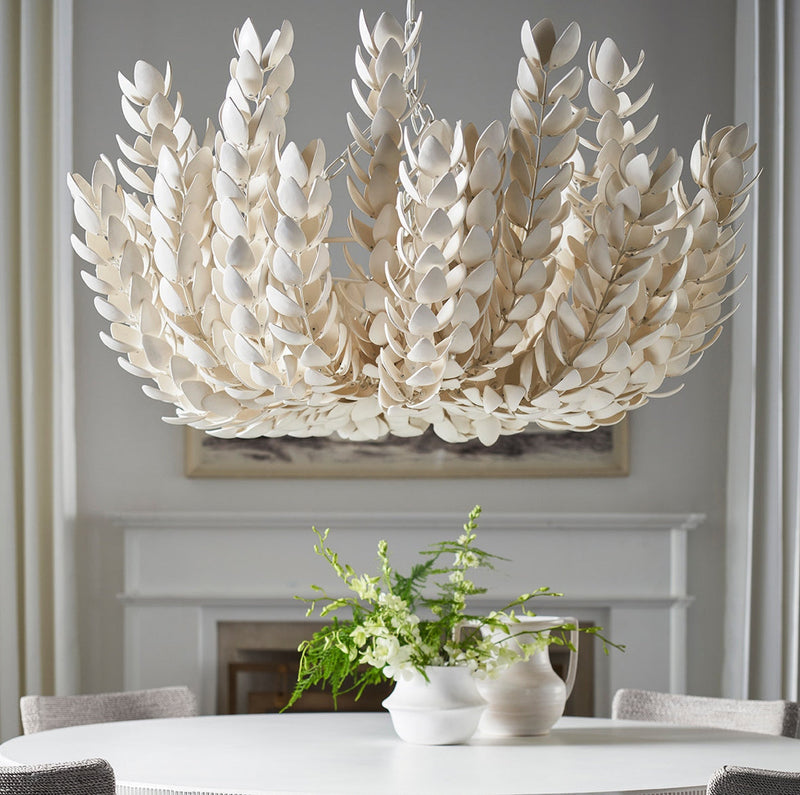
Lighting is one of the most impactful elements in interior design, influencing the functionality, ambiance, and overall aesthetic of a space. The right lighting not only enhances the beauty of your interiors but also ensures comfort and practicality. Whether you’re designing a cozy bedroom, an elegant dining area, or a functional workspace, understanding different lighting types, proper placement, and key design principles can elevate your space.
Understanding the Three Main Types of Lighting
To create a well-balanced lighting plan, it’s important to incorporate three primary lighting types:
1. Ambient Lighting – The main source of illumination that provides overall brightness.
2. Task Lighting – Focused lighting designed for specific activities like reading & working.
3. Accent Lighting – Decorative lighting used to highlight architectural features, artwork, or statement pieces.
By layering these different types, you can achieve depth, functionality, and a visually appealing space.
Click Here to See Our Gorgeous Lighting
Strategic Placement of Lighting Fixtures
Floor Lamps: Versatile and Stylish
 Floor lamps are an excellent way to add both ambient and task lighting, and they work well in various rooms.
Floor lamps are an excellent way to add both ambient and task lighting, and they work well in various rooms.
- Living Room: Position a floor lamp next to a sofa or accent chair for a cozy reading nook. An arc-style floor lamp can also serve as an overhead light source in spaces without ceiling fixtures.
- Bedroom: A slender floor lamp beside a dresser or near a seating area adds warmth and balance.
- Office: A floor lamp with an adjustable arm can provide direct lighting for focused tasks.
Pro Tip:
Choose a floor lamp height between 58”–64” (147–163 cm) for the best illumination without overwhelming the space.
Click Here to See Our Floor Lamps
Table Lamps: Functional and Decorative
 Table lamps provide both task and accent lighting, making them essential in bedrooms, living rooms, and offices.
Table lamps provide both task and accent lighting, making them essential in bedrooms, living rooms, and offices.
- Bedroom: Place a table lamp on each nightstand for balanced bedside lighting
- Living Room: Use a table lamp on an end table to create a cozy, inviting atmosphere
- Entryway: A table lamp on a console table adds warmth and a welcoming glow
Pro Tip:
Size Rule of Thumb for Nightstand Lamps:
- Choosing a bedside table lamp that's roughly two-thirds the height of your nightstand is an ideal rule of thumb to follow. Or you can also choose a lamp so that the bottom of the lampshade is at eye level when you sit on the bed
- The lampshade should not exceed ½ to ⅔ the width of the nightstand to maintain proportion.
Click Here to See Our Table Lamps
Wall Sconces: Space-Saving and Elegant Wall sconces provide a beautiful and functional lighting solution while saving space.
Wall sconces provide a beautiful and functional lighting solution while saving space.
- Bedroom: Install wall sconces above nightstands for a streamlined look. Swing-arm sconces work well for adjustable reading light
- Hallways & Staircases: Use sconces for ambient lighting and to enhance architectural details
- Bathroom: Position sconces on either side of a mirror for even illumination.
Pro Tip:
When installing bedside wall sconces, position them 24”–30” (61–76 cm) above the nightstand or 60”–72” (152–183 cm) from the floor for optimal lighting.
Choosing the Right Chandelier for Your Dining Room
 A chandelier is a statement piece that defines a dining area. Choosing the right size and shape is key to maintaining proportion and enhancing the overall design.
A chandelier is a statement piece that defines a dining area. Choosing the right size and shape is key to maintaining proportion and enhancing the overall design.
Pro Tip:

 Size Rule of Thumb for a Dining Table Chandelier:
Size Rule of Thumb for a Dining Table Chandelier:
- The chandelier diameter should be ½ to ⅔ the width of the dining table
- The bottom of the chandelier should hang 30”–36” (76–91 cm) above the table for an 8-foot ceiling. Add 3” (7.5 cm) for each additional foot of ceiling height.
Chandelier Shape Based on Table Shape:
- Round Dining Tables → Round or Oval Chandeliers
- Complements the table shape and creates a balanced look
- A multi-tiered or globe chandelier can add depth
- Rectangular Dining Tables → Linear or Rectangular Chandeliers
- Provides even lighting across the table’s length
- Consider a row of pendant lights for a modern aesthetic.
Pro Tip: For tables longer than 72” (183 cm), consider two smaller chandeliers or a series of pendant lights for balanced illumination.
For tables longer than 72” (183 cm), consider two smaller chandeliers or a series of pendant lights for balanced illumination.
Click Here to See Our Chandeliers
Leveraging Lighting for Maximum Impact
Use Dimmers for Versatility
Dimmers allow you to adjust brightness levels, making it easy to shift between task lighting and ambiance. This is especially useful in dining rooms, bedrooms, and living spaces.
Maximize Natural Light
Incorporate mirrors and light-coloured furniture to reflect natural light throughout your space. Position furniture strategically to take advantage of windows and skylights.
Final Thoughts
Lighting is more than just illumination—it’s an essential element of interior design that influences mood, enhances functionality, and defines the aesthetic of a space. By carefully selecting the right fixtures and following key placement guidelines, you can transform any room into a stylish and well-lit sanctuary.
Ready to elevate your space with stunning lighting? Explore our curated collection of floor lamps, table lamps, wall sconces, and chandeliers at Shop Deborah L Kerbel and illuminate your home with elegance!


0 comments